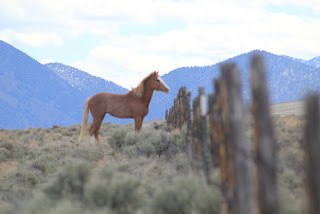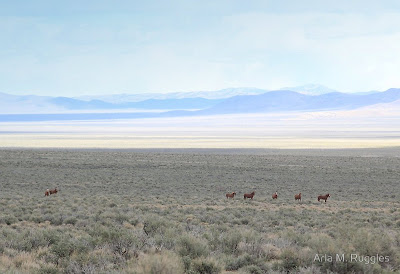(2011.APR.30)
The day is cold and overcast, with intermittent light snow flurries.
 Schellbourne Pass is a high thoroughfare crossing the Schell Creek Mountains between Steptoe Valley to the west, and Spring Valley to the east, along the old Pony Express Route.
Schellbourne Pass is a high thoroughfare crossing the Schell Creek Mountains between Steptoe Valley to the west, and Spring Valley to the east, along the old Pony Express Route. The wide, well-compacted dirt road is steep and winding, passable throughout the year, but may require 4WD or chains in winter.
A small creek runs parallel to the road, at the bottom of a very deep canyon. It feeds a series of small pools all year round.
An abundance of wildlife may be seen here, including deer, elk, and predators.
Cattle typically graze along the narrow creek banks during the summer.
Some of this land is privately owned.
One small band of wild horses ranges from one end of the canyon to another,
This band consists of one stallion, three mares, and a near-yearling colt. They are newly arrived in this canyon, and currently occupy a small territory formerly inhabited by a different band. I will continue searching for the old band, even as I am concerned they were taken in the roundup operation of January, 2011.

























